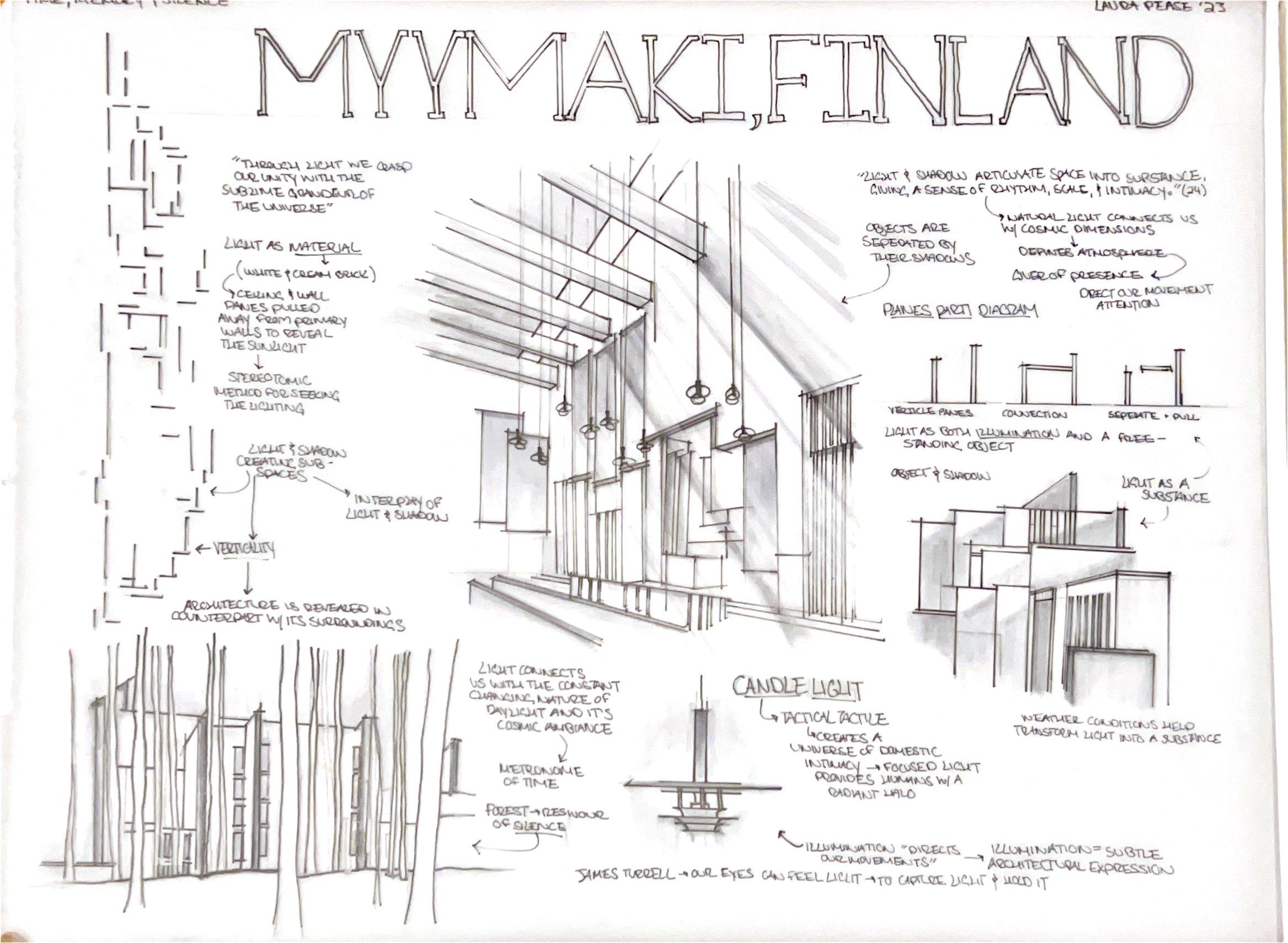
2 minute read
Myyrmaki Church
Vantaa, Finland
Chapter Author - Juhani Pallasmaa
Advertisement
Architect - Juha Leiviskä
In his chapter, Pallasmaa discusses the secular spirituality evoked by architecture, and how sunlight becomes material for the spiritual. Sunlight alters our perception of the atmospheric quality of a space, its form, scale, and materiality. The illustration displays Juna Leiviska’s Myyrmaki Church in Finland to further investigate illuminance as a material, or how to recognize illuminance as a spiritually secular substance. The interior walls of the Myyrmaki church loudly exhibit thoughtful choreography for how sunlight travels across the wall throughout the day. Correlations can be drawn between the Myyrmaki Church and Pallasmaa’s claim, “all material is made out of light.” the built construction of the Myyrmaki church actively diagrams the process in which we conceive light; the material surface casts a shadow; the shadow belongs to the light source; the light is the source of all being. Architecturally, this is done through the pulling and pushing of planes to expose the interior to the sunlight streaming through the skylights. Light is what connects us with the natural realm and the constantly changing phenomena of the sun and cosmos. James Turrell, a spatial and lighting artist, seeks to “capture light and hold it for physical sensing,” as if light were independent materiality or substance.1 Sunlight is the subject of Leiviska’s church, and not only defines the atmospheric quality of the interior, but the rhythm influences how the space should be respected. Turrel captures moments in time when sunlighting is perceived as substance – his sculptures act as photographs of everlasting lighting. And similar to a photograph, the Myyrmaki church repeats the same sunlit rhythm and cadence across its walls.
The properties of Turrell’s diffused light equating atmospheric weather conditions (fog, rain, shine) change the characteristics of the material light. Another piece of architecture that emulates the practice of light as a substance is Le Corbusier’s Notre Dame Du Rampchamp in France. Andoni Karaklas paired Le Corbusier’s chapel with Turrell in how both engage with color to alter the atmospheric quality produced by light. Le Corbusier choreographed multiple moments for different times of day within the interior of the chapel, and these moments are directed by colored and tapered apertures. How lighting is treated as a captured moment-in-time substance within Rampchamp emulates the characteristics and photographic qualities of captured light by Turrell.
Junahi Pallasmaa chose to compare these precedents and artists to create a network between different artists that exhibits light being used as a substance or material. Architecture is revealed in counterpart with its surroundings and is heavily influenced by its environment. Within all of these sacred architectural sites, sunlight is the muse of the project, and every architect uses multiple techniques to capture and disperse lighting. Pallasmaa’s listed architects dual as both designers and photographers of lighting; composing moments of lighting in a space.
Medium: Vellum, led pencil, Tombow ABT Watercolor Pen










